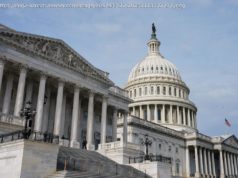The decision is an important victory against government discrimination on the basis of religion.
This morning, the Supreme Court issued its decision in Espinoza v. Montana, striking down Montana’s state constitutional Blaine Amendment, which forbids state aid to “any church, school, academy, seminary, college, university, or other literary or scientific institution, controlled in whole or in part by any church, sect, or denomination.” The decision overrules a Montana Supreme Court decision striking down a state school choice program that had provided tax credits on an equal basis to students attending both religious and secular private schools. The ruling is an important victory for religious freedom, specifically the principle that government policy should not discriminate between private organizations and citizens on the basis of religion.
The decision is a close 5-4 ruling, split along ideological lines with the five conservative justices in the majority, and the four liberals all dissenting. To my mind, that is unfortunate. Striking down blatant government discrimination on the basis of religion should not be so controversial and divisive.
While there are a number of complexities in the case, Chief Justice John Roberts’ majority opinion effectively captures the main issue:
The Blaine Amendment doesn’t exclude only those religious schools which fail to meet neutral educational standards, or have some other kind of flaw. They are barred from receiving state assistance for which similar secular institutions are eligible. That is clearly discrimination on the basis of religion, if anything is. The opinion goes on to explain that the Blaine Amendment cannot possibly survive strict scrutiny, as there is no narrowly tailored state interest that can justify a categorical ban on aid to religious schools, while simultaneously permitting aid to otherwise similar secular ones.
The dissenting justices argue that state governments must be free to discriminate against religious institutions in at least some instances, in order to avoid Establishment Clause programs. Here, for example, is a relevant passage from Justice Sotomayor’s dissent:
This is a longstanding argument offered by defenders of discriminatory exclusion of religious institutions from government education programs. But it is dangerously flawed. If there is a violation of the Establishment Clause or the Free Exercise Clause any time the state provides assistance that helps religious people engage in “spiritual pursuits,” then the same argument can be used to justify excluding religious institutions from virtually any government service or tax credit. If the government provides police and fire department protection to religious institutions on the same basis as secular ones, that facilitates worshippers’ “spiritual pursuits” and denies taxpayers ” the chance to decide for themselves whether and how to fund religion.” The same point applies if the government gives tax exemptions to religious charities on the same basis as secular ones (as both the federal and state governments routinely do).
You don’t have to adopt many conservatives’ unduly narrow interpretation of the Establishment Clause (which they interpret as barring only the establishment of an official church or as directly coercing people to take part in its services) to recognize that nondiscrimination is not establishment.
Home
United States
USA — Political Supreme Court Strikes Down Montana Blaine Amendment Barring State Aid to Religious...






